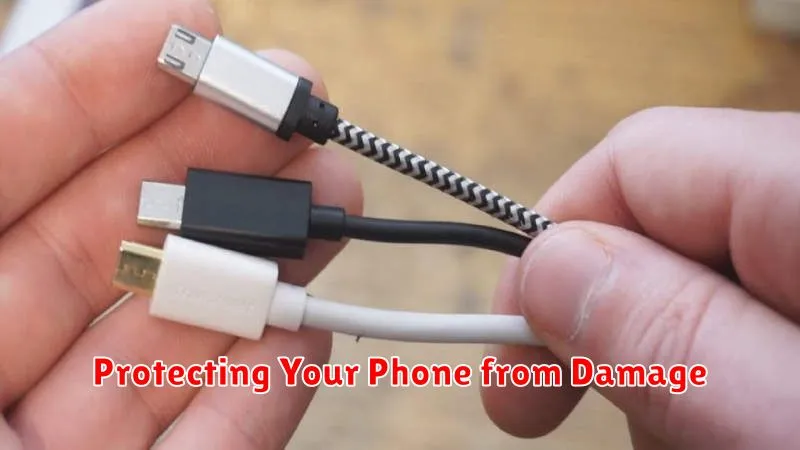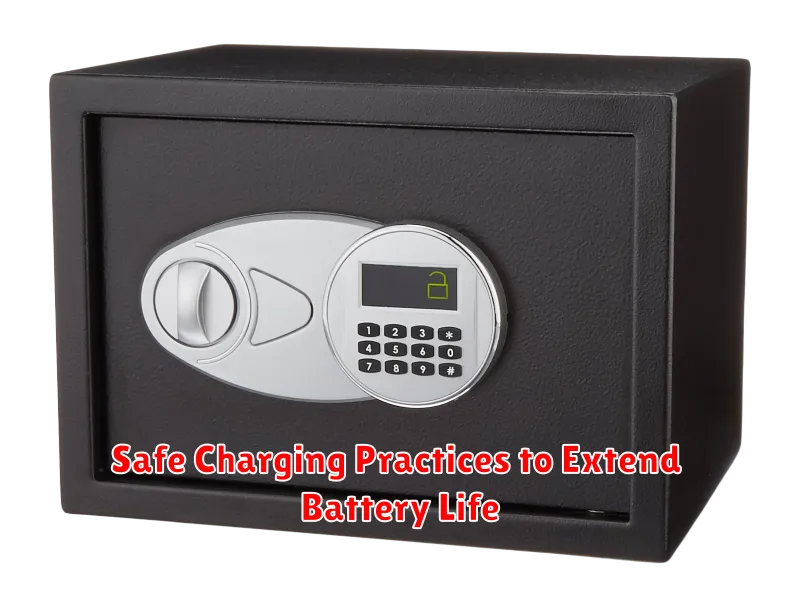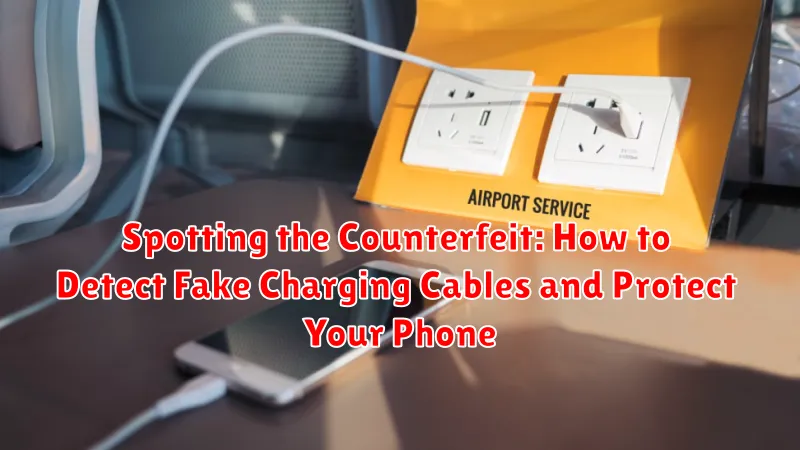Counterfeit charging cables pose a serious threat to your valuable devices and even your safety. These deceptively similar fake charging cables often come at attractively low prices, tempting unsuspecting consumers. However, the hidden dangers far outweigh any perceived savings. Learn how to identify these counterfeit cables and protect your phone from potential harm with our comprehensive guide to spotting fake charging cables. We’ll cover key indicators, from subtle visual cues to performance red flags, empowering you to make informed purchasing decisions and keep your devices safe. Don’t risk damaging your expensive electronics with a fake charger—learn to detect counterfeit cables effectively.
Using a fake charging cable can lead to a range of issues, from slow charging and overheating to data breaches and even fires. This guide will equip you with the knowledge necessary to differentiate between genuine charging cables and their counterfeit counterparts. Understanding the risks associated with fake chargers and knowing how to spot a fake cable is crucial for protecting your phone’s battery health, ensuring optimal performance, and safeguarding your personal data. Don’t fall victim to counterfeit cables; empower yourself with the tools to identify them and ensure the longevity and security of your devices.
Understanding the Risks of Fake Charging Cables
Using counterfeit charging cables might seem like a harmless way to save a few dollars, but the risks they pose to your devices and even your safety can be significant. These cables are often manufactured with subpar materials and lack proper safety mechanisms, leading to a variety of potential problems.
One of the most serious risks is overheating. Counterfeit cables often use thinner wires that can’t handle the electrical current required to charge your device. This can cause the cable and even your phone to overheat, potentially damaging the battery and other internal components. In extreme cases, this could lead to a fire hazard.
Another significant concern is damage to your phone’s charging port. Poorly constructed connectors can wear down the port, making it difficult or impossible to charge with a genuine cable in the future. This can necessitate costly repairs.
Finally, counterfeit cables may not provide the correct charging speed or may even fail to charge your device altogether. This can be inconvenient and frustrating, particularly if you rely on your phone for important tasks.
Identifying Common Signs of Counterfeit Cables
Counterfeit charging cables often exhibit telltale signs that can help you distinguish them from genuine products. Being aware of these common indicators can significantly reduce your risk of purchasing a substandard or even dangerous cable.
Packaging discrepancies are a frequent giveaway. Look for poor quality printing, blurry logos, spelling errors, or inconsistencies with official branding. Generic or non-descriptive packaging should also raise suspicion.
The cable itself can offer further clues. Examine the material quality; counterfeit cables may feel flimsy or lightweight compared to genuine ones. Check the connector ends for inconsistencies in shape, size, or finish. Poorly molded plastic or exposed metal parts are red flags.
Price is another important factor. If a deal seems too good to be true, it probably is. Significantly discounted cables should be approached with caution, as they are more likely to be counterfeit.
Unusual markings or certifications can also indicate a fake. Look for incorrect or missing regulatory markings like CE, FCC, or MFi certification logos. Be wary of unfamiliar certifications or logos that cannot be verified.
Physical Inspection: What to Look For
A careful physical examination can reveal telltale signs of a counterfeit charging cable. Compare the cable to a genuine one, if possible. Pay close attention to these key areas:
Cable and Connector Construction
USB Connector: Examine the metal plating. Counterfeit cables often have rough, uneven, or discolored plating. Check for poorly aligned or mismatched components within the connector. The plastic housing may feel flimsy or brittle. Genuine connectors tend to have a tighter, more precise construction.
Cable Material and Finish: Authentic cables typically have a smooth, consistent texture. Counterfeits may feel rough, uneven, or have a cheaper, shiny plastic coating. The cable itself might be thinner or flimsier than a genuine cable.
Text and Logos: Scrutinize any text or logos printed on the cable and connectors. Look for misspellings, blurry printing, or inconsistencies in font and size. Counterfeiters often struggle to replicate the precise branding and markings of genuine products.
Performance Testing: Checking for Red Flags
Beyond visual cues, performance testing can reveal hidden dangers of counterfeit cables. A genuine cable will efficiently charge your device at the expected rate. Slow charging is a major red flag. If your device takes significantly longer to charge than usual, the cable may be faulty or counterfeit.
Overheating is another serious warning sign. Counterfeit cables often utilize substandard materials and construction which can lead to excessive heat generation during charging. This can damage your device’s battery and even pose a fire hazard. If the cable, your device, or the charging adapter becomes unusually hot, immediately discontinue use.
Finally, observe the charging behavior of your device. Does the charging intermittently stop and start? Does the battery percentage fluctuate erratically while plugged in? These inconsistencies point toward a potentially dangerous counterfeit cable.
Trusted Sources: Where to Buy Genuine Cables
Protecting your phone from the dangers of counterfeit cables starts with purchasing from reputable sources. Always prioritize buying directly from the manufacturer whenever possible. This ensures authenticity and provides the best warranty protection.
If purchasing directly from the manufacturer isn’t feasible, consider authorized retailers. These retailers have established partnerships with manufacturers and are more likely to stock genuine products. Check the manufacturer’s website for a list of authorized sellers in your area.
Reputable online marketplaces can also be a viable option, but exercise caution. Verify the seller’s ratings and reviews before making a purchase. Look for sellers with consistently high positive feedback and a history of selling authentic products. When in doubt, contact the marketplace’s customer support for assistance in verifying a seller’s legitimacy.
Protecting Your Phone from Damage

Using the correct charging cable is crucial for protecting your phone from potential damage. Counterfeit or substandard cables may not adhere to proper safety standards, posing significant risks to your device.
Overheating is a common issue with fake cables. These cables often use inferior materials and construction, which can lead to higher resistance during charging. This increased resistance can generate excessive heat, damaging your phone’s battery, internal components, or even causing fire hazards.
Power surges are another danger. Fake cables may lack the necessary circuitry to regulate the power flow to your device. This can result in unstable voltage and sudden power surges, potentially frying your phone’s circuitry.
Data loss can also occur due to faulty wiring in counterfeit cables. Interruptions during data transfer can corrupt files or even brick your device. Using a certified cable ensures a stable connection and safeguards your valuable data.
Safe Charging Practices to Extend Battery Life

Avoid extreme temperatures during charging. Heat is a major factor in battery degradation. Don’t leave your phone in direct sunlight or a hot car while it’s charging.
Partial charging is preferable to letting your battery completely drain and then charging to 100%. Aim for a charge level between 20% and 80% for optimal battery health.
Use the correct charger for your device. While fast chargers are convenient, using them regularly can contribute to faster battery degradation. Consider using a standard charger when time allows.
Unplug your phone once it’s fully charged. Leaving it plugged in indefinitely, even with modern power management systems, can put unnecessary strain on the battery over time. This trickle charge, though small, can contribute to heat buildup and reduced lifespan.

